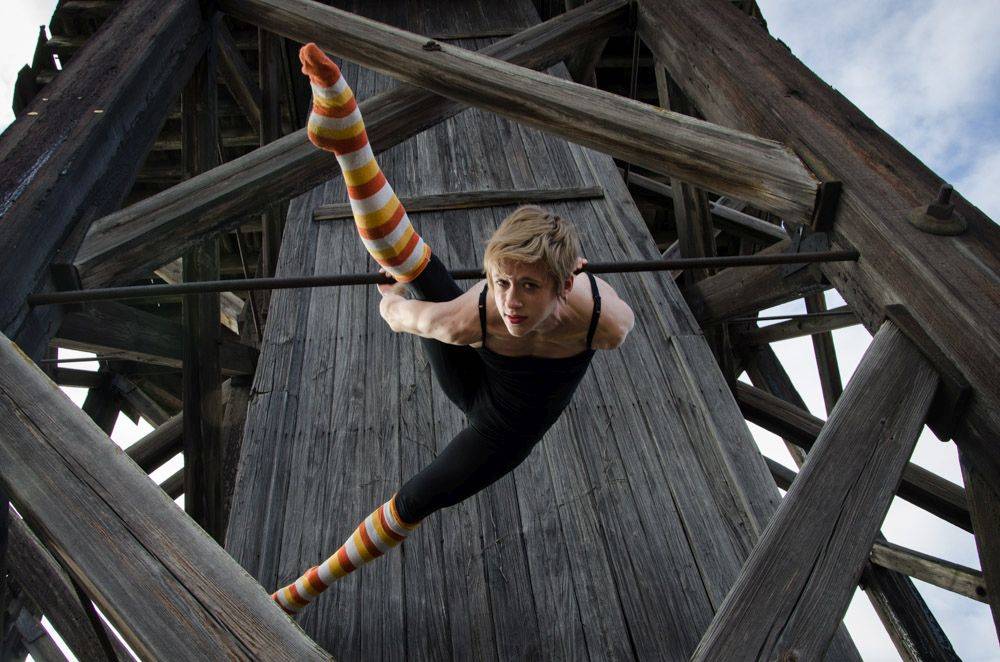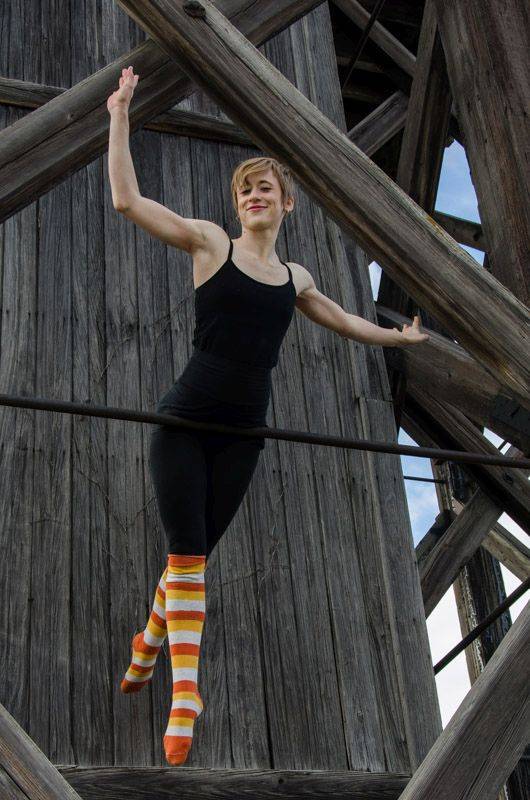
It’s hard not to live in the moment when you’re contorting your body five feet above ground on a bar hanging from ropes.
That’s what Camille Swift and her students do on a daily basis at Top Star Training Center in the outskirts of Champaign.
“Imagine you have a tray of cookies and you’re serving them to the guests,” says Camille to one of her students as they try to perfect the “Mermaid” position. “You don’t want to drop them all over the floor.”
Students tend to let their gaze and their arms drop when attempting certain poses, so Camille uses tricks like the tray of cookies to keep them aware of their form.
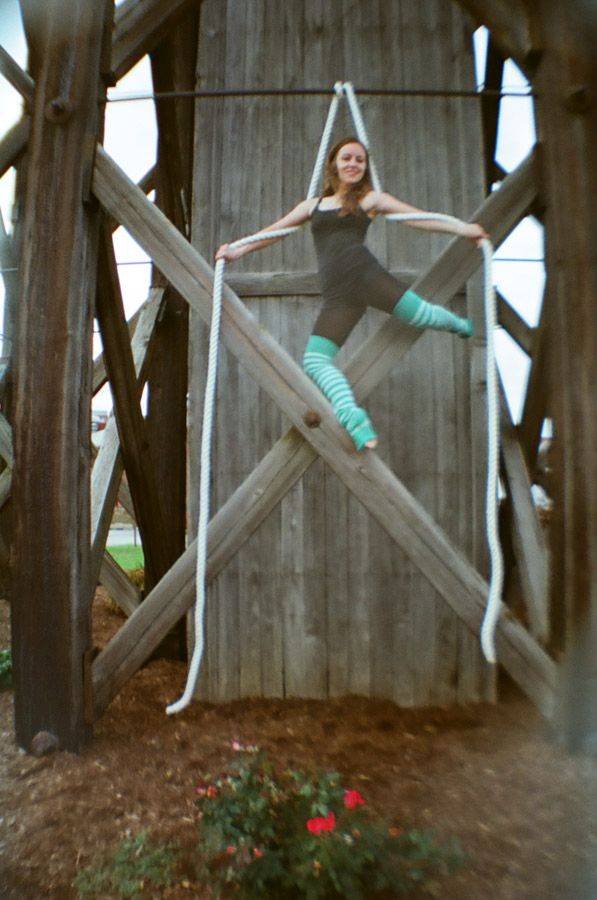
The facial expression on a trapeze artist is almost as important as the grace with which the stunt is performed.
Great static trapeze artists possess the ability to maneuver their bodies in unthinkable ways at great heights and make it look like it’s the easiest thing in the world.
Camille teaches static trapeze, which is similar to flying trapeze, except the bar doesn’t move.
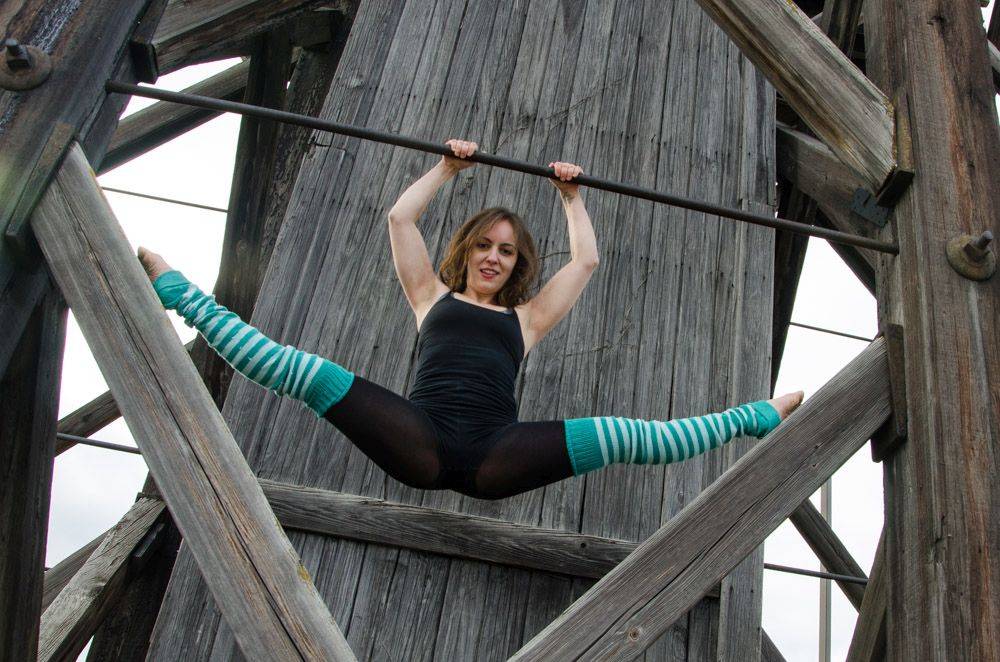
The flying trapeze was developed in the mid-1800s by a Frenchman named Jules Leotard. When he was 18 years old, Léotard developed his act at his father’s house in Toulouse, which had a swimming pool. He fixed up a trapeze above the pool, which functioned as his safety net, and practiced taking off from a high board, and swinging across the pool on a bar into the hands of another aerialist.
There are still professional trapeze artists out there, but people are drawn to trapeze for many different reasons today.
“Some people do trapeze just to work out,” says Sidney Germaine, who’s been training for over a year. “Others do it to find more independence, masculinity, femininity, or just to take part in non-traditional athleticism.”
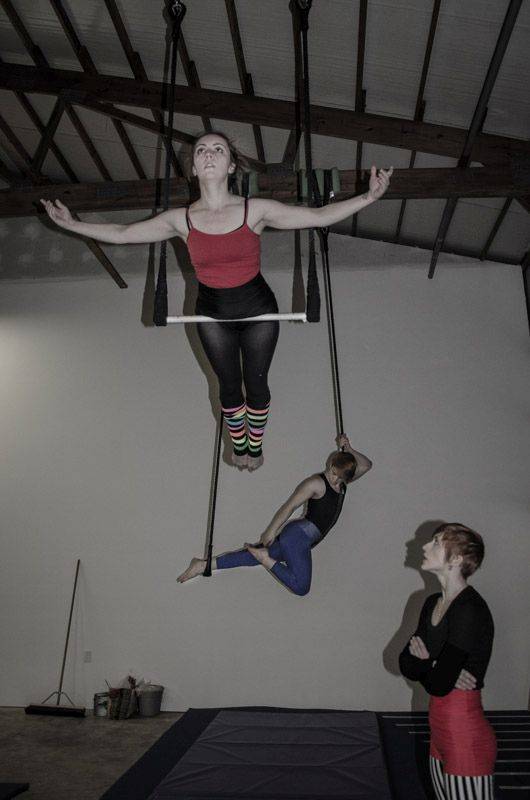
Others find it therapeutic; they say it mirrors the challenges of real life: overcoming fear, growing stronger, gaining confidence.
The first few times you attempt static trapeze, it’s excruciating for the body and mind. But eventually your nerves get used to it and your brain stops sending signals that your life is in peril.
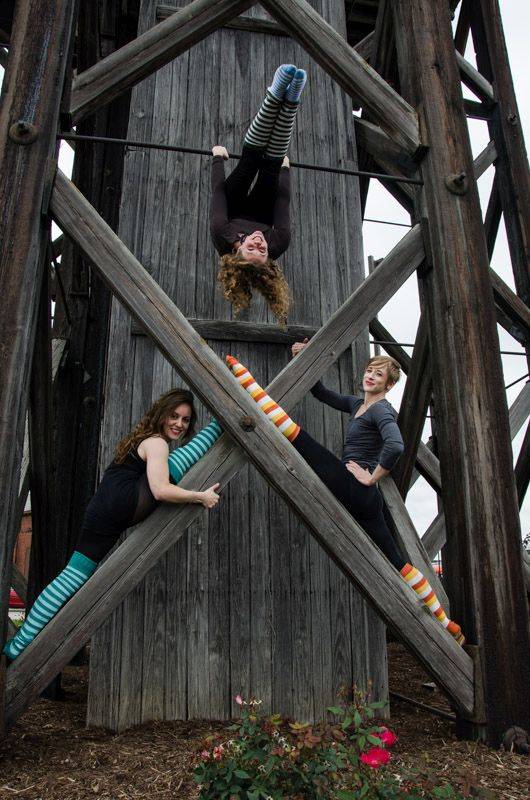
Edeth Engel, who’s also a member of Illini Pole Fitness, heard about Camille’s class from Palmer.
“I love it even though it’s torture,” she says. “It makes me more ambitious and makes me work out regularly.”
Camille Swift discovered trapeze in 2010 when she was living in Chicago. She had been training in “iaido” (Japanese swordsmanship) for about a year when the sensei mentioned he had gone to a really great show called El Circo Cheapo. Camille thought it sounded interesting, so she signed up for the mailing list, and shortly afterward discovered that it was a circus school (the Aloft Loft) that does the show.
She signed up immediately, starting with a silks class, then aerial conditioning, and finally trapeze.
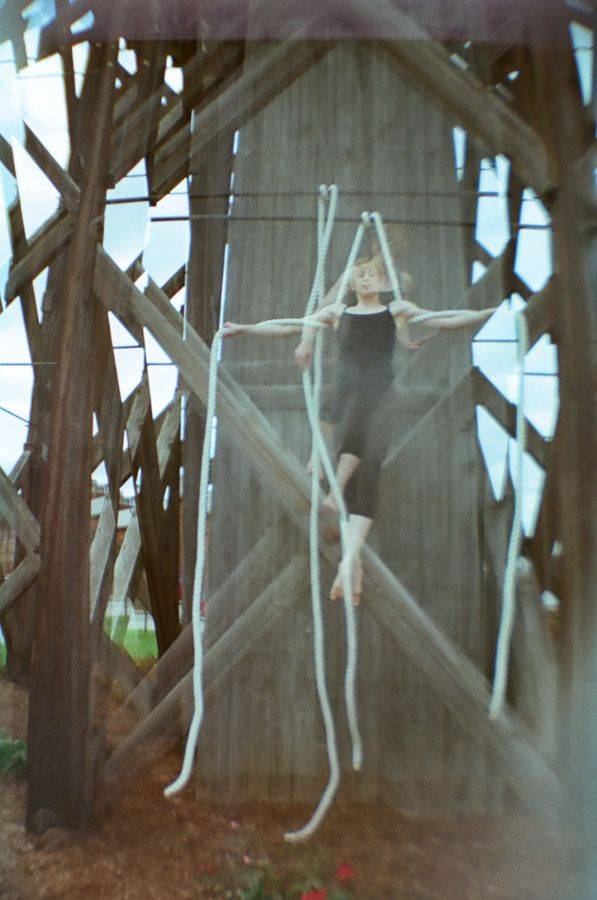
Unlike most of the other students, Sidney is interested in doing trapeze professionally—he started training last summer in Chicago in trapeze and arial stilts.
“They thought I was crazy because I was commuting from Central Illinois,” he says. “So they got me hooked up with Camille, who used to work up there in Chicago and had just moved here,” said Germaine.
But it turns out Champaign isn’t the ideal place for an aspiring circus performer.
“Being from Central Illinois, I’ve done what I can with the resources that I have,” Germaine says. “I didn’t have a lot of money or anything, but I did a lot of theatre and some stilt walking and clowning around town growing up. And then a little after I started college I joined the local burlesque troupe, Carnivàle Debauche, as kind of the head clown person and got into fire arts as well.”
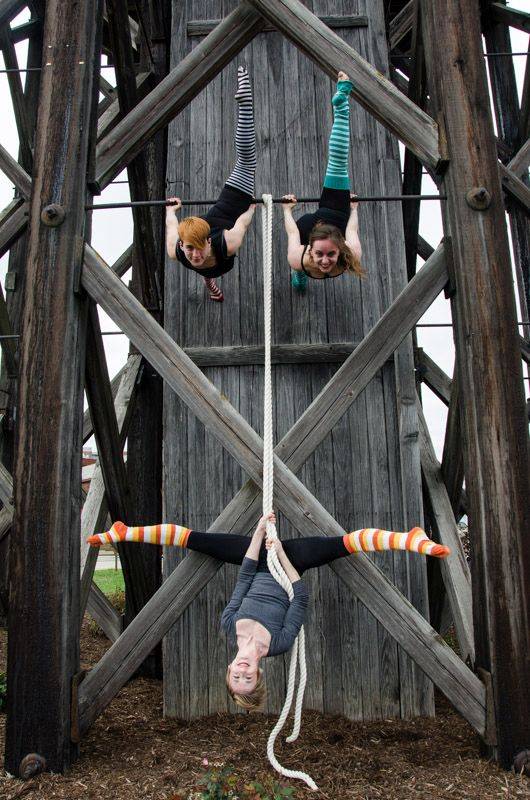
Sidney would like to join some sort of traveling circus or theatre troupe that focuses on non-traditional, physical theatre.
“Eventually I’m going to have to move to a big city,” he says. “They don’t have jobs like that here.”
If you’re interested in taking a trapeze class, email Camille: topstar.trapeze@gmail.com.








